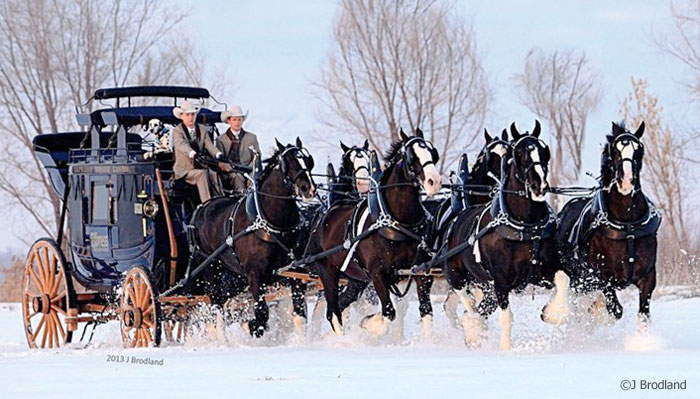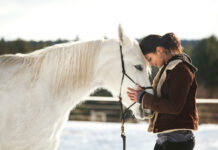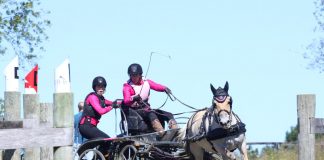Draft horses are commonly associated with draft driving and heavy harness work. Here’s a quick overview of draft horse driving terminology, including different hitches:
- Team: two horses hitched side by side
- Tandem: two horses, one in front of the other
- Unicorn hitch: a team with one horse in front
- Four-horse hitch: two teams of horses
- Six-horse hitch: three teams of horses
- Eight-horse hitch: four teams of horses
- Lead team: the team of horses at the front of a hitch
- Swing team: the middle team of horses in a six-horse hitch
- Wheel team: the team of horses nearest the wagon

“Then you have positions in your hitch,” continues Minshull. “The wheel [team], which is closest to the wagon, is your biggest horses. Usually they should be pulling about 60 percent of the wagon, so you want them to be bigger, stronger horses. As you go out, the next team is the swing team, and they’re going to be a little bit smaller. Then the lead team is the smallest but the most athletic, most alert team. It takes awhile. We’re constantly switching horses around to have the best team at any particular time.”
When shown in competition or exhibition, draft horses traditionally display an eye-catching array of decorations in addition to their impressive wagons and shining harnesses. Plumes, tassels, mane flowers, mane rolls and tail bows are popular ways to accentuate the innate beauty of the draft breeds and add a bit of pageantry to hitches.
Read More: Draft Horses






Thank you for the interesting article about horse hitches. I love horses.
Nice summary and explanation. I hear about the “big hitch”. What exactly is a “big hitch”? I’ve read a few articles, but there is no definition and I can only guess from usage.